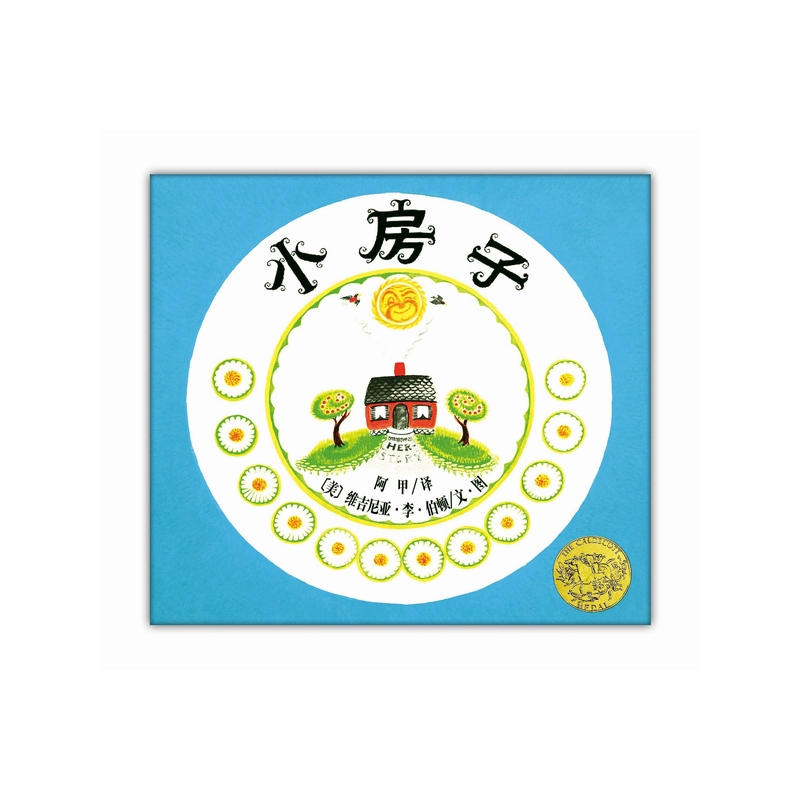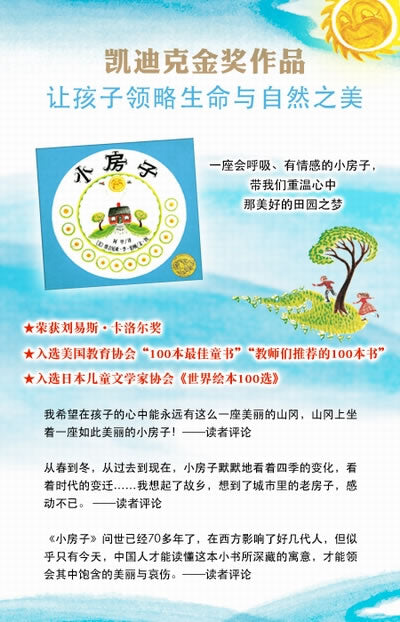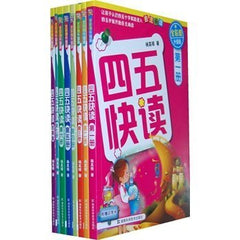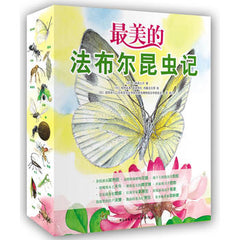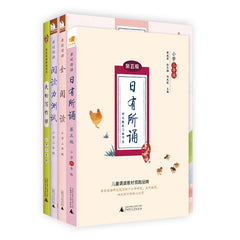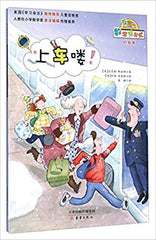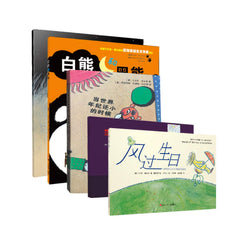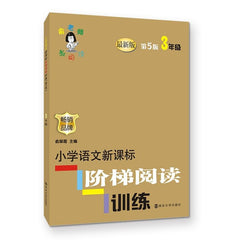The Little House(Chinese edition)小房子
- Home
- Chinese Books
- The Little House(Chinese edition)小房子
★ 荣获1943年凯迪克金奖
★ 1959年刘易斯·卡洛尔书架奖
★ 入选美国教育协会“100本童书”“教师们推荐的100本书”
★ 入选日本儿童文学家协会《世界绘本100选》
★作者维吉尼亚·李·伯顿是20世纪美国杰出绘本作家,她创作于1942年的这本《小房子》,70年后依旧触动人心。一座会呼吸、有情感的小房子,让孩子领略生命与自然的美好,传达出热爱环境、热爱生命的理念。
★ 印制精美,图画明媚、恬静,细节丰富,内涵深刻。
小房子每天站在山冈上看风景,除了日月星辰和四季的变化,小房子还看到乡村的景物随着挖马路、开商店、盖高楼、通地下铁……而一点一点地改变。结果,小雏菊和苹果树不见了,取而代之的是都市的乌烟瘴气和行色匆匆的人们。还好,小房子的主人的后代发现了小房子,把她移到了乡下,她又可以静静地欣赏大自然的风景了。
《小房子》问世已经有70年了,获得过1943年的凯迪克金奖。今天人们谈论它*多的,还是它对现代文明的担忧和批判。急剧膨胀的都市,宛如一头长驱直入的怪兽,转瞬间就吞噬了小房子、吞噬了丘陵和丘陵上的雏菊和苹果树……即便是结尾,尽管小房子得救了,重新在一片长着小雏菊和苹果树的丘陵上找到了归宿,但还是留下了一个悬念,又有谁能保证它永远不再被现代文明吞噬呢?
这是一个美丽的故事,也是一个弥漫着伤感的故事。让孩子体会到大自然的美好、了解城市的建设过程,从而更加热爱环境、热爱生命。
维吉尼亚·李·伯顿(Virginia Lee Burton)
1909年生于美国马萨诸塞州,她的父亲是麻省理工学院首位教务长,母亲则是一位英国诗人兼音乐家。维吉尼亚·李·伯顿小的时候,每逢生日和圣诞节,父亲送给她的礼物不是玩具,而是许多精美的绘本,也常给她读绘本。因此,她对绘本始终保持着极大的兴趣。高中毕业后,她没有上大学,而是继续学习绘画和芭蕾舞,每天利用上课路上两个多小时的时间画速写。离开旧金山之后,她获得了一份专业素描工作,为许多优秀舞者和艺术家留下了珍贵的身影。
维吉尼亚·李·伯顿一直保持和孩子一起工作的习惯。她会把作品一遍又一遍地念给孩子听,在观察孩子的反应之后,加以修正。如此反复,直到自己和孩子都满意为止。维吉尼亚·李·伯顿的主要作品有《逃跑的小火车头》《迈克·马力甘和他的蒸汽挖土机》《加里可,一匹奇迹马》《凯迪和一场很大的雪》《缆车梅波儿》,以及荣获1943年凯迪克金奖的《小房子》,与安妮·马尔科姆森合作的、荣获1948年凯迪克大奖的《罗宾汉之歌》,和被赞誉为是她艺术与人生的集大成之作的《生命的故事》。
1968年10月15日,维吉尼亚·李·伯顿因病去世,享年59岁。
The little house first stood in the country, but gradually the city moved closer and closer.
Amazon.com Review
"Once upon a time there was a Little House way out in the country. She was a pretty Little House and she was strong and well built." So begins Virginia Lee Burton's classic The Little House, winner of the prestigious Caldecott Medal in 1943. The rosy-pink Little House, on a hill surrounded by apple trees, watches the days go, by from the first apple blossoms in the spring through the winter snows. Always faintly aware of the city's distant lights, she starts to notice the city encroaching on her bucolic existence. First a road appears, which brings horseless carriages and then trucks and steamrollers. Before long, more roads, bigger homes, apartment buildings, stores, and garages surround the Little House. Her family moves out and she finds herself alone in the middle of the city, where the artificial lights are so bright that the Little House can no longer see the sun or the moon. She often dreams of "the field of daisies and the apple trees dancing in the moonlight." Children will be saddened to see the lonely, claustrophobic, dilapidated house, but when a woman recognizes her and whisks her back to the country where she belongs, they will rejoice. Young readers are more likely to be drawn in by the whimsical, detailed drawings and the happy ending than by anything Burton might have been implying about the troubling effects of urbanization. (Ages 3 to 6)

